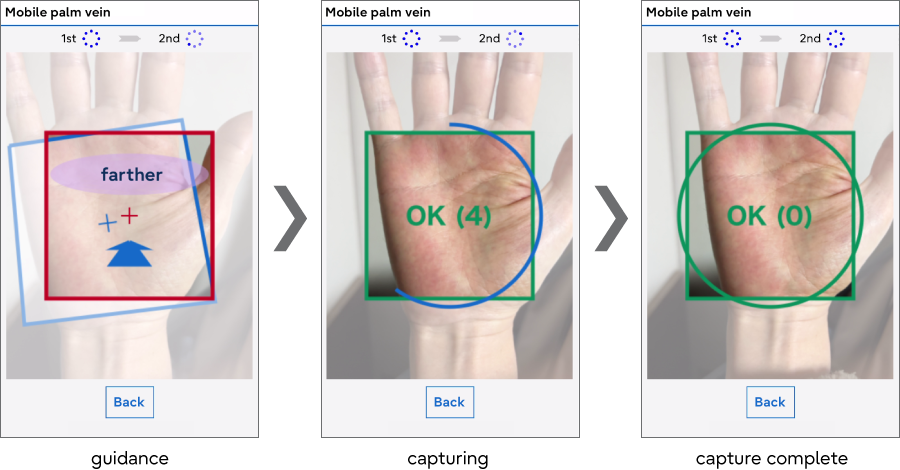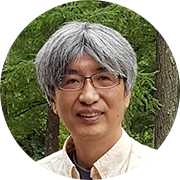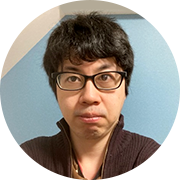Fujitsu’s Palm Vein Authentication technology gets even smarter!
- latest breakthrough enables use of standard smartphone cameras for palm vein registration
April 6, 2023
Japanese
Identify authentication is playing an increasingly important role in our everyday lives, from helping to secure payment processing in stores to providing fast identity checks at event venues. Countering this is the rising social problem of spoofing and fraud activity, creating new challenges for identify authentication. As we all struggle with managing multiple IDs and passwords across a growing number of devices, the concept of password-less systems using biometric authentication is understandably catching more attention.
Biometric authentication uses a person’s biometric information, significantly reducing the risk of spoofing authentication systems. Palm vein authentication in particular offers a number of advantages such as high authentication accuracy and minimal possibility for counterfeiting, due to its use of our unique physical information.
In conventional palm vein authentication, sensors have to use near-infrared light. Fujitsu has made an important breakthrough by developing a new technology that can extract an individual’s vein pattern by simply taking a picture of their palm with a standard phone camera. This can then be compared with the vein pattern acquired by the physical sensor. What this means is that users can register from anywhere on their smartphones, and immediately use biometric authentication services on entry into offices, stores or venues.
Challenges
In order to use biometric authentication services, you need to register your biometric information in advance before you can start to use the service. Identical sensors with the same characteristics need to be used to ensure that there is no difference in the biometric information entered during registration and authentication. In the case of palm vein authentication, the sensors use near-infrared light for both registration and authentication, involving the need for the individual to go to the physical location of the sensor and register.
However, if you can register using a standard camera, it becomes possible to acquire your palm vein data much more easily – for example at home – making the whole biometric authentication service much more accessible.
The nature of the camera plays an important role. Our palms have visible creases on the surface, which can obstruct images captured using a conventional camera. They cannot match a sensor’s ability to obtain a very fine vein pattern. As a result, standard cameras have not been suitable for vein authentication applications in general.
Fujitsu’s Breakthrough Technology
Thanks to Fujitsu’s latest developments, this has now all changed. Our technology is able to extract the vein pattern from a palm image captured with a standard camera, then matching this to the vein pattern acquired with a sensor.
1. Extracting vein patterns from palm images captured by a standard camera
Vein information captured with a standard camera is contained in a visible light image that is shaded according to the reflection intensity of sunlight or ambient lighting. However, because our veins are present under the skin, images captured this way do not show them as clearly as sensors using near-infrared light, which can penetrate the body.
To solve this problem, we have developed a technology capable of extracting clear vein patterns by performing wavelength resolution and analysis to emphasize the actual vein patterns. We do this by using the characteristics of reflection and palm penetration based on light wavelength differences. We then perform accumulative averaging while tracking the palm position in multiple images (Figure 1). This technology makes it possible to extract clear vein patterns from visible light images.
 Figure 1 Process flow on extracting palm vein patterns from image captured using a standard camera
Figure 1 Process flow on extracting palm vein patterns from image captured using a standard camera
2. Techniques to make standard camera images equivalent to those acquired by sensors
In addition to the characteristics of the light used, there are other important differences between the images captured by a standard camera and those captured by a sensor. To overcome this, we have developed an image correction technique that brings the smartphone image much closer in range to an image captured by the sensor, enabling highly accurate vein pattern matching.
Another issue involves what happens when you hold a smartphone in one hand and take a picture of the palm of the other hand. The hand’s position and tilt is not very stable, which making it difficult to obtain an accurate vein pattern. To address this, we have added a function that estimates the palm posture from the image captured by the image recognition AI technology, By guiding the user to place their hand in the appropriate position, we are able to acquire the palm vein pattern with a stable positional relationship similar to that of the sensor. (Figure 2).
 Figure 2 The screen shot of guidance and capturing process
Figure 2 The screen shot of guidance and capturing process
This new technology development means that it is now possible to pre-register palm vein information from a smartphone at phone. The vein patterns extracted from the smartphone-based palm images are simply matched with the sensor-acquired vein patterns obtained with a sensor. If you have completed the pre-registration process, you can use the biometric authentication service with for example an in-store sensor straight away, significantly improving convenience. Importantly, this development will pave the way for a major expansion of palm vein authentication services in the future.
Developer Comments
Converging Technology Laboratory Development Team Member

Soichi Hama

Tomoaki Matsunami

Akira Kamano

Lina Septiana
As part of our project, we are conducting research and development on biometric authentication technologies that use a person’s unique biometric information, such as palm vein authentication, face authentication, and multi-biometric authentication.
This technology greatly expands the use of palm vein authentication and enables more convenient and comfortable vein authentication services. We will continue to work on biometric authentication technologies R&D, creating a world where your unique biometric credentials are a passport for all the authentication requirements necessary for various aspects of life.
Future Vision
In the future, we will continue to develop technologies designed to provide practical solutions to problems associated with authentication, including how to address a variety of usage scenarios, higher precision, and model dependency investigation.



